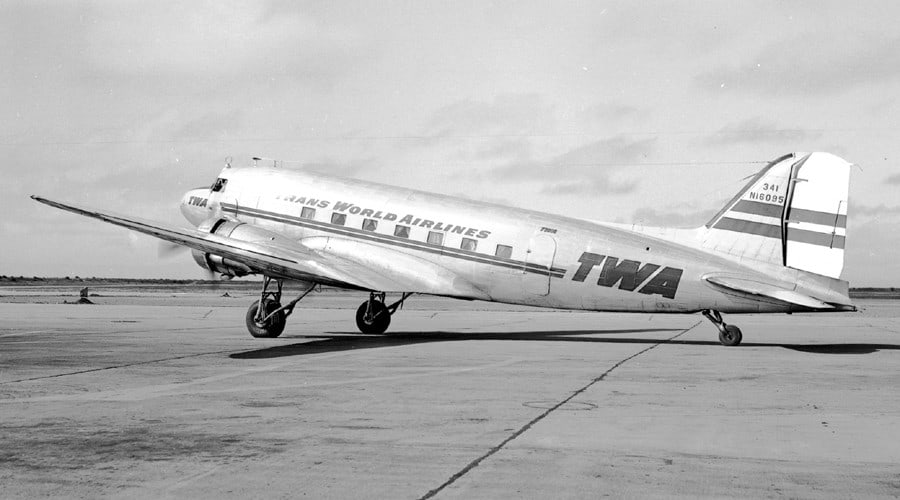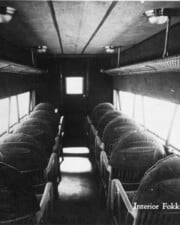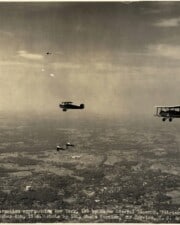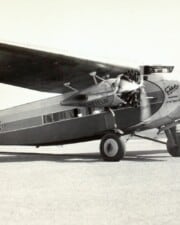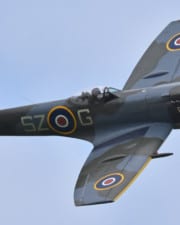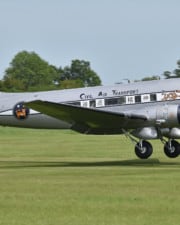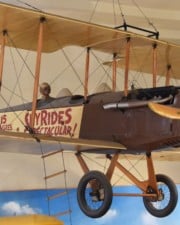The 1930s were the second half of what is commonly known as the Golden Age of Aviation. As in the 1920s, rapid developments in technology and investment in aviation that didn’t stop even during the Great Depression made air travel more common. However, what was it like to get on a plane in the 1930s?
Table of Contents
In many ways, air travel in the 1930s was similar to flying in the 1920s: planes were prone to turbulence and couldn’t travel long distances. However, technology made the cabin experience more comfortable. For those who could afford to fly, air travel became a true luxury experience.
Here is what it would have been like to travel by air in the 1930s. Also read about what air travel was like in the 1920s!
The 1930s Aircraft
The 1930s saw great advances in airplane technology. Planes were now made entirely of metal instead of the wood, metal, and fabric combos of previous decades. The monoplane also became more popular as the biplane was consigned to the trash bin of history.
These changes in construction had tangible impacts on how airplanes could travel. By the middle of the decade, planes could fly at a maximum speed of 200 mph, which was double what was possible just a few years prior. They could also fly by night, which revolutionized international travel.
One of the most important models of the decade was the Douglas DC-3. By the end of the 1930s, this lightweight, speedy model made up the bulk of the fleet for most airlines. Other companies that revolutionized aircraft design were Fokker, Curtiss, and several others.

As in the 1920s, airplanes were not the only option for air travel. The 1930s saw the Golden Age of Zeppelins as well. Although airships never caught on for mass travel, they were a luxurious experience for the wealthy and often more comfortable than airplanes.
However, after the Hindenburg Disaster of 1937 killed 36 people, passengers realized that traveling via a blimp powered by flammable gasses wasn’t worth it. It didn’t help that airships were associated with Germany due to the revolutionary design of Zeppelins coming out of that country, and Nazism was growing and growing in power during this decade.
Where Could People Travel by Air?
While air travel was only possible between nearby cities in the 1920s, horizons really expanded in the 1930s thanks to growing technology. It was possible to travel across the continent, across the ocean, and even around the world.
One of the airlines that pioneered international long-haul travel was Imperial Airways. This British airline connected the British Empire, which was still in its heyday. In fact, the government heavily subsidized its development to maintain control over its empire and easily transport people and mail.
However, just because long-distance international travel was possible does not mean that it was comfortable or accessible. Traveling around the world was still a test of endurance. Going from London to Australia took twelve days and required stopping at least twice a day along the way.
These multi-day jaunts were still faster than traveling by ship, which could take several weeks or even months. Plus, airlines incentivized passengers to take these trips by promising luxurious accommodations and adventure along the way.
Who Got to Travel?
In the 1920s, air travel was becoming more prevalent, but it was still inaccessible to the average person. Flying was just for wealthy people with a taste for adventure, while most people traveled by train, ship, or even car.
Flying in the 1930s was still somewhat expensive, particularly as people struggled during the Great Depression, but it was becoming much more accessible and popular. Between 1930 and 1939, the number of passengers traveling by air grew several hundred times. In the United States alone, the end of the decade saw over 1 million passengers a year—a far cry from the several thousand passengers a year at the beginning of the decade.
There are a few reasons why more people traveled by air during this time. Better technology meant flying was faster and more comfortable, giving the industry an advantage over other modes of transportation. Tickets were slightly more affordable. However, air travel was still an inaccessible luxury for most people who weren’t wealthy or upper middle class.
What It Was Like Inside a 1930s Airplane
One of the biggest changes in air travel in the 1930s was the experience for passengers. From an endurance trip, air travel became a true luxury.
The biggest changes in passenger comfort happened due to adjustments in plane technology. New metal bodies meant that passengers experienced less noise and temperature disruptions because the insulation was better. For the first time, airlines introduced in-air heating and cooling systems to help passengers stay at a comfortable temperature.
Another aspect that made air travel such a luxury was the accommodation offered to passengers. Early planes had uncomfortable wicker seats with not that much legroom. In the 1930s, planes had upholstered seats, couches, reclining seats, and even swivel seats, so passengers could turn around and talk to each other or play cards.

On overnight flights, passengers had berths that could create comfortable beds where people could safely sleep at night. Many passengers today would complain that air travel is much less comfortable now when passengers get packed in like sardines!
Other adjustments to the in-flight experience added to the luxurious atmosphere surrounding air travel. One of the main changes was service. While first stewards had a function that purely served passenger safety, now the experience approached service you would find in fancy hotels. Flight attendants (including some of the first women) would make up your bed, serve meals at tables covered in white tablecloths, and even bring breakfast in bed to passengers in their berths.
Flights were long, but passengers had plenty to keep themselves entertained. In-flight entertainment included organized movie projections and live radio broadcasts. Passengers also had lounge areas where they could comfortably interact with others on their flight.
Negative Aspects of Air Travel in the 1930s
Although air travel had an air of glamour around it in the 1930s, that doesn’t mean it was entirely comfortable. Flights were still long and tedious, making them inaccessible to most people who had to work, and no smart advertising or promises of adventure could make up for the less comfy realities of air travel at the time.
Besides berths and more comfortable seating, airliners of the time came with another mandatory feature—air sickness bowls. Turbulences were very common and not just mild bumps—planes would drop hundreds of feet with no warning. Passengers had to be prepared with nerves (and stomachs) of steel.
Another feature that was common when flying in the 1930s was an oxygen tank at every seat. Cabins were not pressurized yet, so it was common for cabins to lose oxygen as planes changed altitude. Airlines took precautions to prevent people from getting altitude sickness, so thankfully, severe cases of illness were rare, but it was still unpleasant.
Air travel was also less safe than it is today, although it was a far cry from how dangerous it was in the early decades. Sadly, crashes were still common, and some passengers did not survive their glamorous flights.
References ▾
Related Posts
